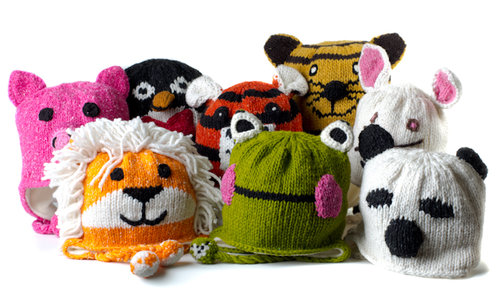One of my favorite things to do is go bargain shopping. I love going to vintage, thrift, and discount designer stores to find high-quality pieces at a fraction of the retail price. When I’m traveling, I’m always searching for unique clothing, jewelry, and art in local markets and shops.
So when I first visited the Saturday market in Otovalo, Ecuador several years ago, I was in heaven. Otavolo is the largest indigenous market in South America, and it’s filled with rows and rows of vendors, selling colorful scarves, sweaters, blankets, paintings, jewels, woodcrafts, and more. And with a few bargaining skills and a tiny Spanish vocabulary, you can easily walk away with some beautiful items, without doing much damage to your wallet.
My favorite item that I brought home on that first trip was a winter animal hat for my baby cousin. I paid $5 for the hat and thought it would be a cute Christmas present (and looked far more expensive than the price tag).
When I returned home, I looked around for other gifts for family and friends and I noticed children’s winter animal hats were selling right here in the U.S. for a whopping $25 or more. And the hats I was finding at the Christmas market in New York City were nowhere near as nice as the hand-made, fleece-lined hats I had purchased in Ecuador.
It was at that moment that I decided to make my first import.
I contacted the vendor who made the hats (luckily I had gotten his name and e-mail address because I loved the hats so much from the beginning) and asked if he could make me 60 hats before my next visit. I requested a variety of pigs, penguins, lions, tigers, frogs, panda bears, and bunnies.
Because I was buying them in bulk, he came down from $5 to $3.50 apiece and I purchased the whole lot for just $210! Bringing them home was easy, too. I did something called suitcase importing; I was able to check them in one large duffle bag and I didn’t have to make any special declarations at customs.
Plus, because my mom was a nursery school teacher at the time, and each of the classes at her school had animal names, I had the perfect outlet for sales. I created a flyer for her school and sold each hat for $20, offering the school a 10% kickback on sales as a thank you. I sold 30 hats to the kids at her school, bringing in a profit of $540.
I then sold 15 hats to friends and family at a reduced $10 price, bringing in another $150.
Here’s a snapshot of my earnings:
Gross Earnings: $710
Cost of Hats sold (45): $157.50
Total Profits: $552.50
My total profits paid for a flight to Tahoe for a New Year’s vacation that year!
I gave away a handful of the leftover hats as gifts for friends and family and donations for various auctions. And as I’m writing this, I realize I still have about ten that I could sell for pure profit this fall!
Here’s my advice for getting started:
- Find a popular item that will sell: I hadn’t even thought about selling kids’ hats until I saw how popular they were in the U.S. And how much more expensive they were here. I knew I could get a high-quality version at a lower price in Ecuador, so that’s how I decided on this item. (Remember, buy low, sell high).
- Think about your buyer: In order to sell something, you have to have a buyer. Think about who your audience is and how you can reach them first before you put money into an import. I knew I would sell to the nursery school because I had access there. But you could also sell through your own website or through Amazon or eBay.
- Have fun and try it! I did this to make some money on the side, but I ended up getting so much more enjoyment out of it than I thought. Seeing how excited my Ecuadorian artisan was about getting such a big order and then watching the little kids’ faces light up when they had cool new winter hats that matched their classroom names was so much fun!
Good luck!


